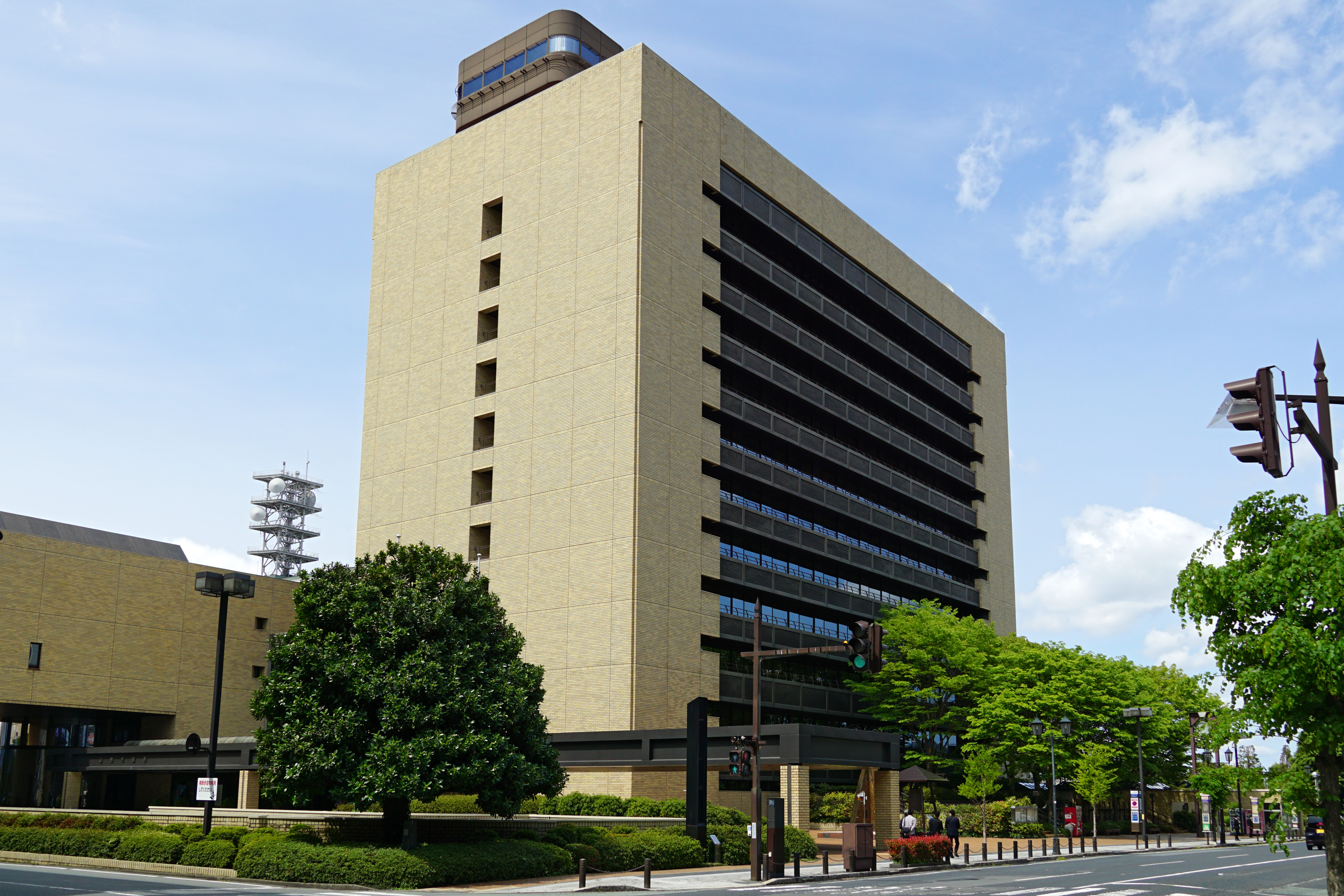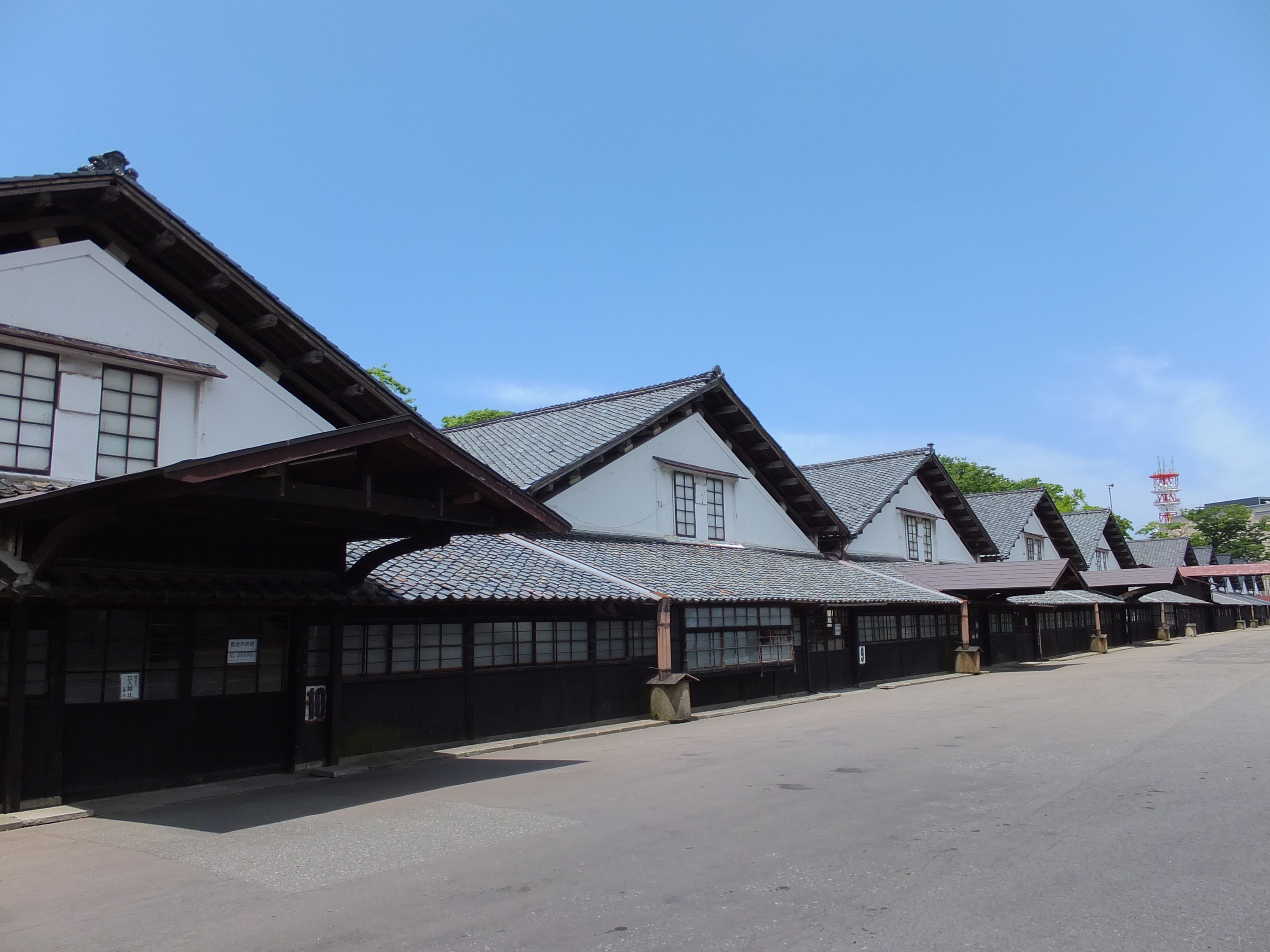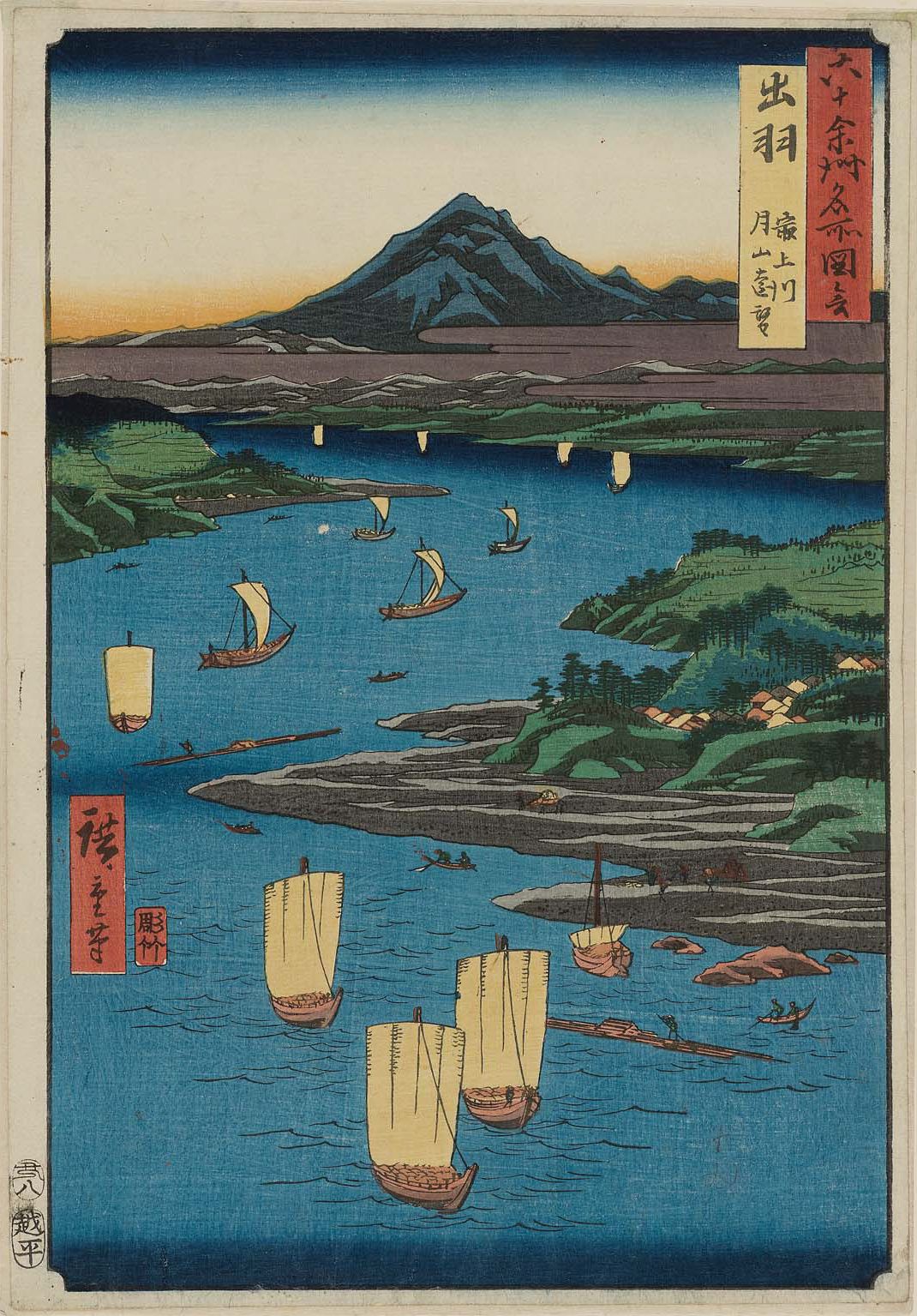|
Kaminoyama
250px, Hayama neighborhood in Kaminoyama is a city located in Yamagata Prefecture, Japan. , the city had an estimated population of 29,617 in 11278 households, and a population density of 120 persons per km2. The total area of the city is . Geography Kaminoyama is located in southeast Yamagata Prefecture, in the Murayama Basin, bordered by Miyagi Prefecture to the east. Mount Zaō is located within its borders. Neighboring municipalities *Yamagata Prefecture ** Yamagata, Yamagata ** Nanyo, Yamagata ** Takahata, Yamagata *Miyagi Prefecture ** Kawasaki, Miyagi ** Shichikashuku, Miyagi Climate Kaminoyama has a Humid continental climate ( Köppen climate classification ''Cfa'') with large seasonal temperature differences, with warm to hot (and often humid) summers and cold (sometimes severely cold) winters. This includes heavy amounts of snowfall from late November until early March. Precipitation is significant throughout the year, but is heaviest from August to October. Th ... [...More Info...] [...Related Items...] OR: [Wikipedia] [Google] [Baidu] |
Kaminoyama Domain
a feudal domain in Edo period Japan, located in Dewa Province (modern-day Yamagata Prefecture), Japan. It was centered on Kaminoyama Castle in what is now the city of Kaminoyama, Yamagata. History Kaminoyama Domain was situated on the strategic Ushū Kaidō, subroute of the Ōshū Kaidō connecting Edo with the northern portion of Honshu. The domain was sandwiched in between the powerful Yamagata Domain to the north and the Yonezawa Domain to the south. During the Muromachi period, the area was noted as a hot spring resort and a stronghold of the Mogami clan. It was a contested territory between the Mogami and the Date clans during the Sengoku period, and later between the Mogami and the Uesugi clan. After the destruction of the Mogami clan by the Tokugawa shogunate, Kamiyama Domain (40,000 '' koku'') was created in 1622 for Matsudaira Shigetada, who laid out the plan of the future castle town. The Matsudaira were replaced by the Gamō clan from 1626-1627, followed by the ... [...More Info...] [...Related Items...] OR: [Wikipedia] [Google] [Baidu] |
Ushū Kaidō
The was a subroute of the Ōshū Kaidō and the Sendaidō in Japan. It breaks off from the Sendaidō at Kōri-juku in the modern-day Koori in Fukushima Prefecture. It connects to Aburakawa-juku along Matsumaedō, the other subroute of the Ōshū Kaidō. It is traced by National Routes 13 and 7. It was established after Tokugawa Ieyasu called for the construction of routes connecting the capital of Edo (now Tokyo) with other parts of Japan.Ushū Kaidō NTT Akita Branch. Accessed January 4, 2007. Stations of the Ushū Kaidō The 57 post stations along the Ushū Kaidō are listed below in order and are divided by their modern-day prefecture. The present day municipality is listed afterwards in parentheses. (Actual post stations are ind ...[...More Info...] [...Related Items...] OR: [Wikipedia] [Google] [Baidu] |
Yamagata, Yamagata
is the capital city of Yamagata Prefecture located in the Tōhoku region of northern Japan. , the city had an estimated population of 248,772 in 103,165 households, and a population density of 650 persons per km2. The total area of the city is . Geography Yamagata is in the southern portion of the Yamagata Basin in southeast Yamagata Prefecture. The northern and northwestern parts of the city are flatland, and the eastern part of the city is occupied by the Ōu Mountains. The city includes Mount Zaō within its borders. The Mamigasaki River passes through the city, and the Tachiyagawa River forms the border between Yamagata and Tendō. Neighboring municipalities *Yamagata Prefecture ** Tendō **Kaminoyama **Higashine ** Nanyō ** Yamanobe ** Nakayama *Miyagi Prefecture **Sendai ** Kawasaki Climate Yamagata has a Humid continental climate (Köppen climate classification ''Dfa'') with large seasonal temperature differences, with warm to hot (and often humid) summers and cold ( ... [...More Info...] [...Related Items...] OR: [Wikipedia] [Google] [Baidu] |
Yamagata Prefecture
is a prefecture of Japan located in the Tōhoku region of Honshu. Yamagata Prefecture has a population of 1,079,950 (1 June 2019) and has a geographic area of 9,325 km² (3,600 sq mi). Yamagata Prefecture borders Akita Prefecture to the north, Miyagi Prefecture to the east, Fukushima Prefecture to the south, and Niigata Prefecture to the southwest. Yamagata is the capital and largest city of Yamagata Prefecture, with other major cities including Tsuruoka, Sakata, and Yonezawa. Yamagata Prefecture is located on Japan's western Sea of Japan coast and its borders with neighboring prefectures are formed by various mountain ranges, with 17% of its total land area being designated as Natural Parks. Yamagata Prefecture formed the southern half of the historic Dewa Province with Akita Prefecture and is home to the Three Mountains of Dewa, which includes the Haguro Five-story Pagoda, a recognised National Treasure of Japan. History The aboriginal people once inhabit ... [...More Info...] [...Related Items...] OR: [Wikipedia] [Google] [Baidu] |
Takahata, Yamagata
270px, Yamagata Takahata Winery is a town located in Yamagata Prefecture, Japan. , the town had an estimated population of 23,367, in 7629 households, and a population density of 130 persons per km². The total area of the town is . Geography Takahata is located in mountainous southeastern Yamagata Prefecture. The Mogami River flows through the town. Neighboring municipalities *Yamagata Prefecture ** Yonezawa ** Nan'yō **Kaminoyama ** Kawanishi *Miyagi Prefecture ** Shichikashuku *Fukushima Prefecture **Fukushima Climate Takahata has a Humid continental climate (Köppen climate classification ''Cfa/Dfa'') with large seasonal temperature differences, with warm to hot (and often humid) summers and cold (sometimes severely cold) winters. Precipitation is significant throughout the year, but is heaviest from August to October. The average annual temperature in Takahata is . The average annual rainfall is with July as the wettest month. The temperatures are highest on average i ... [...More Info...] [...Related Items...] OR: [Wikipedia] [Google] [Baidu] |
Tōhoku Region
The , Northeast region, or consists of the northeastern portion of Honshu, the largest island of Japan. This traditional region consists of six prefectures (''ken''): Akita, Aomori, Fukushima, Iwate, Miyagi, and Yamagata. Tōhoku retains a reputation as a remote, scenic region with a harsh climate. In the 20th century, tourism became a major industry in the Tōhoku region. History Ancient & Classical period In mythological times, the area was known as Azuma (吾妻, あづま) and corresponded to the area of Honshu occupied by the native Emishi and Ainu. The area was historically the Dewa and the Michinoku regions, a term first recorded in (654). There is some variation in modern usage of the term "Michinoku". Tōhoku's initial historical settlement occurred between the seventh and ninth centuries, well after Japanese civilization and culture had become firmly established in central and southwestern Japan. The last stronghold of the indigenous Emishi on Hons ... [...More Info...] [...Related Items...] OR: [Wikipedia] [Google] [Baidu] |
Shichikashuku, Miyagi
is a town located in Katta District, Miyagi Prefecture, Japan. , the town had an estimated population of 1,323, and a population density of 5.0 persons per km² in 626 households. The total area of the town is . Geography Shichikashuku is located in the Tōhoku region of northern Japan in the far southwestern corner of Miyagi Prefecture. Surrounded by the Zaō Mountains, it is bordered by Yamagata Prefecture to the north and west, and by Fukushima Prefecture to the south. Parts of the town are within the borders of the Zaō Quasi-National Park or the Zaō Kōgen Prefectural Natural Park. Neighboring municipalities Miyagi Prefecture * Shiroishi * Zaō Yamagata Prefecture *Kaminoyama * Takahata Fukushima Prefecture *Fukushima Climate Shichikashuku has a humid climate (Köppen climate classification ''Cfa'') characterized by mild summers and cold winters. The average annual temperature in Shichikashuku is 9.6 °C. The average annual rainfall is 1430 mm with Septe ... [...More Info...] [...Related Items...] OR: [Wikipedia] [Google] [Baidu] |
Kawasaki, Miyagi
270px, Kawasaki town hall is a town located in Miyagi Prefecture, Japan. , the town had an estimated population of 8,637 and a population density of 32 persons per km2 in 3,391 households. The total area of the town is . Geography Kawasaki is located in south-western Miyagi Prefecture, bordered by the Ōu Mountains to the west. Mount Zaō (1840.8 meters) is partly within the borders of Kawasaki. About 85% of the town area is classified as mountainous. Neighboring municipalities Miyagi Prefecture *Sendai * Murata * Zaō Yamagata Prefecture * Yamagata *Kaminoyama Climate Kawasaki has a humid climate (Köppen climate classification ''Cfa'') characterized by mild summers and cold winters. The average annual temperature in Kawasaki is 11.0 °C. The average annual rainfall is 1318 mm with September as the wettest month. The temperatures are highest on average in August, at around 24.1 °C, and lowest in January, at around -0.9 °C. Demographics Per Japanese ... [...More Info...] [...Related Items...] OR: [Wikipedia] [Google] [Baidu] |
Dewa Province
was a province of Japan comprising modern-day Yamagata Prefecture and Akita Prefecture, except for the city of Kazuno and the town of Kosaka. Dewa bordered on Mutsu and Echigō Provinces. Its abbreviated form name was . History Early period Prior to the Asuka period, Dewa was inhabited by Ainu or Emishi tribes, and was effectively outside of the control of the Yamato dynasty. Abe no Hirafu conquered the native Emishi tribes at what are now the cities of Akita and Noshiro in 658 and established a fort on the Mogami River. In 708 AD was created within Echigō Province. The area of Dewa District was roughly that of the modern Shōnai area of Yamagata Prefecture, and was gradually extended to the north as the Japanese pushed back the indigenous people of northern Honshū. Dewa District was promoted to the status of a province () in 712 AD, and gained Okitama and Mogami Districts, formerly part of Mutsu Province. A number of military expeditions were sent to the area, with ... [...More Info...] [...Related Items...] OR: [Wikipedia] [Google] [Baidu] |
Meiji Period
The is an era of Japanese history that extended from October 23, 1868 to July 30, 1912. The Meiji era was the first half of the Empire of Japan, when the Japanese people moved from being an isolated feudal society at risk of colonization by Western powers to the new paradigm of a modern, industrialized nation state and emergent great power, influenced by Western scientific, technological, philosophical, political, legal, and aesthetic ideas. As a result of such wholesale adoption of radically different ideas, the changes to Japan were profound, and affected its social structure, internal politics, economy, military, and foreign relations. The period corresponded to the reign of Emperor Meiji. It was preceded by the Keiō era and was succeeded by the Taishō era, upon the accession of Emperor Taishō. The rapid modernization during the Meiji era was not without its opponents, as the rapid changes to society caused many disaffected traditionalists from the former samu ... [...More Info...] [...Related Items...] OR: [Wikipedia] [Google] [Baidu] |
Shukuba
were post stations during the Edo period in Japan, generally located on one of the Edo Five Routes or one of its sub-routes. They were also called ''shuku-eki'' (宿駅). These post stations (or "post towns") were places where travelers could rest on their journey around the nation. They were created based on policies for the transportation of goods by horseback that were developed during the Nara and Heian periods. History These post stations were first established by Tokugawa Ieyasu shortly after the end of the Battle of Sekigahara. The first post stations were developed along the Tōkaidō (followed by stations on the Nakasendō and other routes). In 1601, the first of the Tōkaidō's fifty-three stations were developed, stretching from Shinagawa-juku in Edo to Ōtsu-juku in Ōmi Province. Not all the post stations were built at the same time, however, as the last one was built in 1624. The lodgings in the post stations were established for use by public officials an ... [...More Info...] [...Related Items...] OR: [Wikipedia] [Google] [Baidu] |
Edo Period
The or is the period between 1603 and 1867 in the history of Japan, when Japan was under the rule of the Tokugawa shogunate and the country's 300 regional ''daimyo''. Emerging from the chaos of the Sengoku period, the Edo period was characterized by economic growth, strict social order, isolationist foreign policies, a stable population, perpetual peace, and popular enjoyment of arts and culture. The period derives its name from Edo (now Tokyo), where on March 24, 1603, the shogunate was officially established by Tokugawa Ieyasu. The period came to an end with the Meiji Restoration and the Boshin War, which restored imperial rule to Japan. Consolidation of the shogunate The Edo period or Tokugawa period is the period between 1603 and 1867 in the history of Japan, when Japan was under the rule of the Tokugawa shogunate and the country's regional ''daimyo''. A revolution took place from the time of the Kamakura shogunate, which existed with the Tennō's court, to th ... [...More Info...] [...Related Items...] OR: [Wikipedia] [Google] [Baidu] |
.jpg)




